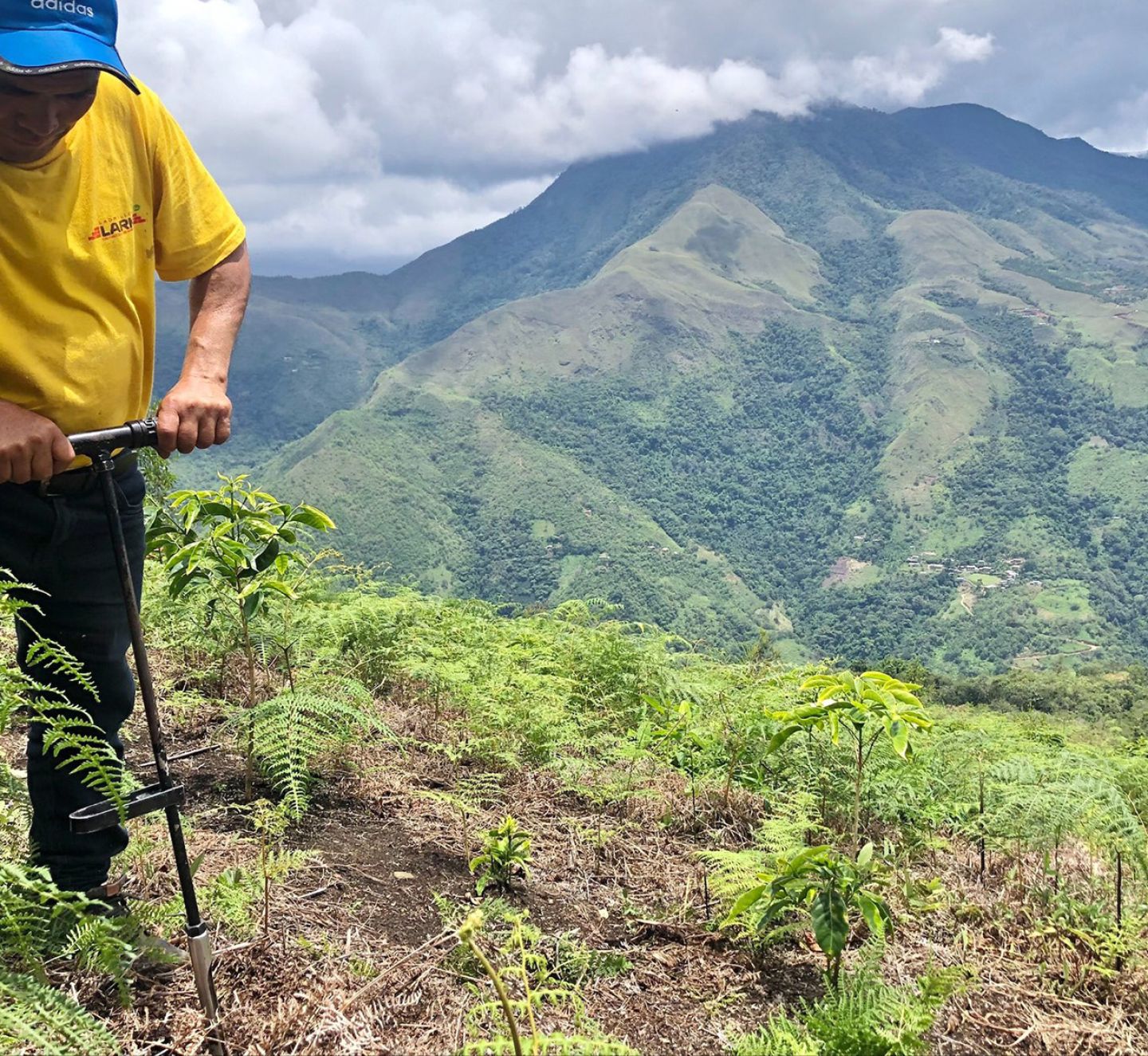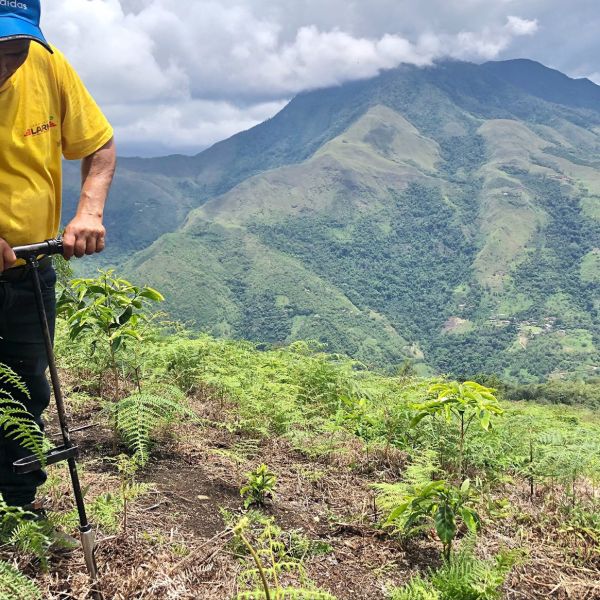Image: Juan Leodan, a producer from the Origin Coffee Cooperative. Credit: Café Selva Norte
Nature-based solutions (NbS) can – if properly designed and implemented – be a cost-effective approach to drive down global emissions, helping us build resilience to the effects of a changing climate, and improving human wellbeing.
Tapping into the extraordinary climate change mitigation and adaptation benefits of NbS will, however, require a significant increase in financing, to the tune of USD 598–824 billion every year between now and 2030.
Closing this yawning gap in nature and biodiversity financing will not be possible with public funds alone, which today make up over 80% of the investments going towards supporting nature-based solutions. We must mobilise private sector finance.
The bankability of NbS can make or break the flow of private finance
What is holding the private sector back from investing in NbS? In short: financially viable projects. Despite growing awareness among private investors of the opportunities presented by NbS investments, few NbS deals actually meet investor expectations. For example, the risk/return ratio of a vast majority of NbS, linked to several factors such as deal sizes, revenue streams and investment terms, are simply not attractive enough for private investors. As a result, the NbS market is gradually becoming limited by the lack of investment opportunities, rather than by a lack of interest from the investment community.
To help scale up investment in NbS, we must break down silos. Project developers and investors must start sharing business and investment models that have successfully managed to attract commercial investment. But what exactly do these models look like and how can they be replicated?
Common success factors for improving NbS bankability
A new report developed by South Pole together with WWF investigated the key success factors in developing bankable NbS.
The study analysed a range of success factors, including project owners' and partners' expertise and track record; the effects of regulatory environments; dedicated feasibility assessment and technical assistance grants; the use of specific financial instruments (including concessional loans and guarantees); and the combination of several revenue streams.
It found that:
- There is no simple “blueprint to bankability". There are a variety of context specific factors involved in designing and implementing a NbS. Therefore, while some success factors – such as partners' expertise and the use of feasibility grants – are more common than others, the specific political, economic, social, and environmental context of each NbS will have a significant influence on which factors to prioritise.
- While some success factors have high potential for improving the bankability of a NbS, their implementation can be too challenging for many projects, especially those that are smaller in size. This is particularly the case for securing guarantees, which have been essential in large deals such as the Belize blue bond, but are linked to high costs and lengthy negotiation processes.
- Projects must be designed in close collaboration with potential investors. Project developers must understand the constraints and interests of investors, and ensure that these are addressed in the design of the solution(s). Assumptions about what investors may want (e.g. outcome-based payments) can be proven wrong.
- A success factor for one project can be a hindrance for another – understanding the local context is key. For example, when considering NbS projects that produce commodities, such as cocoa, coffee or dairy, securing offtake agreements for said commodity will heavily depend on considerations such as supply and demand and price volatility. While it may help to secure a market in some cases, it could drive prices down in another.
The findings of the study do not mean that successful projects cannot be recreated elsewhere. The key to replication is to adopt a flexible approach and identify locations where the main success factors (such as a crucial policy incentive) can be realised. For example, the Forest Resilience Bond, currently implemented in California, relies heavily on the involvement of public sector actors and could be replicated in other US states.
All stakeholders have a role to play
Knowing how to achieve bankability is one thing, catalysing investment at scale is another. How can we move from individual, small-scale projects to large investments across landscapes and seascapes?
First and foremost, investors and project developers need to learn from each other and share their experiences of different business and investment models, including traditionally sensitive information such as deal size and expected or realised returns. Meanwhile, the complexity of building and scaling the NbS marketplace will require cross-sectoral collaboration among various actors:
- Public entities and philanthropies must continue to provide grant capital for project design and feasibility assessments, technical assistance, capacity building and impact measurement to help more projects reach investment readiness and unlock private finance.
- Non-profit organisations and research institutions are essential knowledge partners – they can provide targeted expertise in best practices and impact measurement, as well as provide a platform for case studies that have been tried and tested in the field.
- Private investors must continue to develop their internal capacities to assess NbS investments – with help from non-profit and research actors – and help position NbS as a new credible asset class.
- Governments must design effective policies at a local, national, and international level that help to incentivise the development of high-quality NbS and enable private investment in this emerging market.
Philanthropic grants and other public sector finance have enabled the NbS marketplace to grow steadily over the past few years and will continue to play an important role in the future. However, continuing to rely on this type of traditional funding alone will not be sufficient to address the twin crises in climate and biodiversity.
The financial returns of the private sector are not incompatible with NbS. Presenting NbS as investable opportunities will be crucial to unlocking the large amounts of relatively untapped commercial finance. It is our hope that the success factors identified through this study will help provide the ingredients for project developers and investors to implement bankable NbS that deliver positive outcomes for both people and nature.
Image: Juan Leodan, a producer from the Origin Coffee Cooperative. Credit: Café Selva Norte













